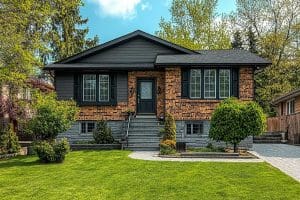Unlocking Investment Potential in Your Own Backyard
Introduction: Local Knowledge, Long-Term Wealth
When it comes to successful real estate investing, there’s one timeless truth: real estate is local. While macroeconomic trends and national housing statistics set the broader tone, the best opportunities are often right in your backyard. From growing suburbs to undervalued inner-city pockets, high-yield real estate investments are often found in places overlooked by the average buyer.
This blog is designed to guide investors—both seasoned and new—on how to identify, analyze, and act on profitable property opportunities in their local markets. We’ll walk through key areas of consideration including investment goals, market analysis, rental yields, risk management, and more.
Define Your Investment Goals
Before diving into any market, you need clarity on why you’re investing. Your goals will shape the type of property you buy, how you finance it, and what kind of return you aim to achieve.
Common Real Estate Investment Goals:
- Cash Flow Generation: Focused on rental income exceeding expenses (positive cash flow).
- Capital Appreciation: Buying undervalued properties in growth areas for long-term gains.
- Tax Sheltering: Taking advantage of depreciation, interest deductions, and capital gains exemptions.
- Portfolio Diversification: Balancing residential, commercial real estate, and vacant land assets.
Clarify your timeline, desired ROI, and risk tolerance before searching listings or contacting a Realtor®.
Understand Your Local Market
Hyperlocal Trends Drive Investment Value
No two neighborhoods are the same, even within the same city. That’s why local real estate knowledge is essential. Look beyond headline prices and instead study:
- Inventory levels
- Sales-to-list price ratios
- Absorption rates
- Rental vacancy rates
- Zoning changes and development permits
For example, Calgary’s southeast communities like Belvedere and Hotchkiss are poised for growth due to LRT expansion and new schools, while Edmonton’s northwest zones like Starling benefit from ring road access and mixed-use zoning.
Evaluate Property Values and Rental Yields
Understanding current property values helps prevent overpaying, while rental yield indicates how well a property will perform as an income-generating asset.
Use Comparative Market Analysis (CMA)
Study comparable properties (comps) that recently sold or are actively listed in your target neighborhood. Pay attention to:
- Price per square foot
- Days on market
- Renovation level
- Lot size
- Basement suite availability
Measure Gross and Net Rental Yields
Gross Rental Yield = (Annual Rent / Purchase Price) x 100
Net Rental Yield = (Net Operating Income / Purchase Price) x 100
Higher yields often indicate strong cash flow potential, especially in secondary or emerging markets.
Calculate Return on Investment (ROI)
ROI is one of the most critical metrics to evaluate the viability of a real estate investment.
Essential ROI Calculations
- Cash-on-Cash Return: Measures your return based on the actual cash you invested.
Formula: (Annual Cash Flow / Total Cash Invested) x 100 - Cap Rate (Capitalization Rate): A snapshot of a property’s profitability before financing.
Formula: (Net Operating Income / Purchase Price) x 100
Smart investors in Alberta often target cap rates of 5–8% depending on location and asset type.
Assess Risks and Expenses
Don’t Just Look at Returns—Examine the Risks
High potential return often comes with higher volatility or maintenance issues. Always account for:
- Maintenance and repair costs (5–10% of rent)
- Property taxes and insurance
- Vacancy rate assumptions
- Unexpected Shifts in Market Trends
- Political Influence
- Tenant turnover or default risk
- Unexpected capital expenditures
Mitigate risks through thorough inspections, accurate rental agreements, and hiring a property management company when needed.
Monitor Market Shifts and Growth Catalysts
Stay Ahead of Emerging Trends
Real estate markets shift with local and regional developments. Monitor:
- Upcoming transit projects
- New school construction
- Rezoning applications or urban densification plans
- Economic drivers like a new hospital, university, or industrial hub
In Alberta, many investors benefited from early insight into the Calgary Green Line LRT, which increased property values in adjacent communities before construction even began.
Study Neighborhood Dynamics
Dive Into Community-Level Indicators
Understanding the neighborhood profile is as important as the property itself. These factors influence rentability, appreciation, and long-term desirability:
- Access to amenities and commute to the major employment hub areas
- Presence of schools, parks, and healthcare facilities
- Crime rates
- Accessibility to main highways and Public transport
- Demonstrating Good Neighborhood Practice by local community
- Demographics: age distribution, family sizes, income levels
- Local tenant demand
Neighborhoods that are gentrifying—where older homes are being renovated and local businesses are popping up—often provide some of the best investment appreciation opportunities.
Use Professional Support for Due Diligence
Local markets are complex. To navigate them successfully, surround yourself with professionals who specialize in investment real estate:
- Realtor® with investment experience
- Real estate lawyer for due diligence and legal structure
- Mortgage broker who understands rental income qualification
- Home inspector for accurate condition assessments
- Accountant knowledgeable about capital gains, tax deductions, and GST implications
Their expertise can help you uncover red flags or spot hidden opportunities.
Case Examples from Alberta’s Local Markets
Here are a few current examples from the Alberta market that illustrate the power of local insights:
Legal Suited Homes
In communities like Martindale or Saddle Ridge, buying a detached home with a legal basement suite provides dual income, low vacancy, and high tenant demand from growing immigrant populations.
Duplexes
Duplex homes for $600,000 +/- can generate approximate total monthly rents exceeding $2900-$3500, offering a good cap rate.
Pre-Construction Homes
Early-phase new builds allow investors to lock in prices today with possession a year out—perfect for equity growth during current appreciation cycle.
Conclusion: Your Best Investment Could Be Right Next Door
Success in real estate doesn’t require buying in the hottest city or the flashiest tower. It often comes from knowing your local area better than anyone else—and using that knowledge to act before the market does.
By defining your goals, studying neighborhood dynamics, evaluating ROI, and staying attuned to local shifts, you position yourself for both immediate cash flow and long-term growth.
Explore. Analyze. Invest.
Start with your local market—and let opportunity grow from there.
Written by Malvinder S. Tiwana
Tiwana Real Estate Team | www.maltiwana.ca
Over 20 years of helping investors succeed in Alberta’s evolving real estate landscape.









